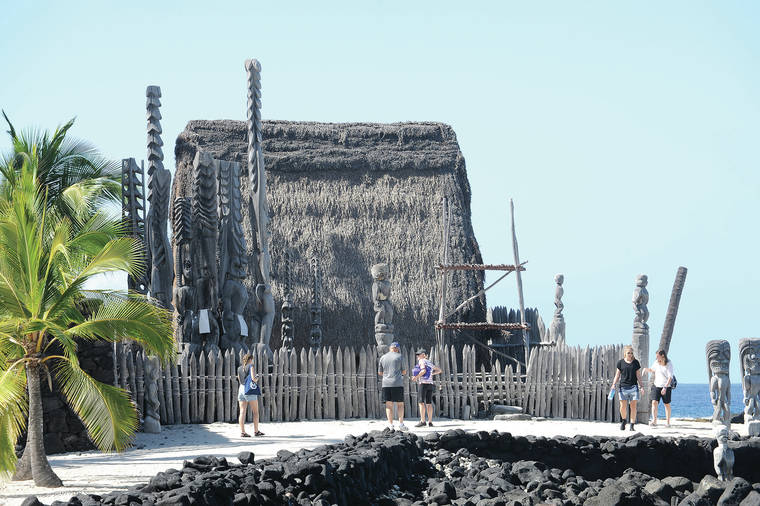A new plan for tourism on the Big Island highlights the potential for using sustainable tourism to preserve and improve management of resources on the island.
The Hawaii Tourism Authority on Wednesday released a Hawaii Island Destination Management Action Plan, developed in partnership with Hawaii County and the Island of Hawaii Visitors Bureau, for the next two years, espousing the virtues of “regenerative tourism.”
“Regenerative tourism takes sustainability one step further and focuses on the net benefit of the visitor economy to a destination, looking at the social and cultural benefits,” the plan reads, listing a series of actions that county and state agencies and the private sector can take on in order to achieve those goals.
“We have a certain kind of traveler who have been interested in this kind of tourism for years,” said Ross Birch, executive director of the IHVB. “But now it’s really on the destinations themselves to set these things up and make them happen.”
Birch is one of the 19 members of the steering committee that helped shape the DMAP. Other members included former Hawaii Island Chamber of Commerce Executive Officer Miles Yoshioka, ‘Imiloa Astronomy Center’s Executive Director Ka‘iu Kimura, Hawaii Volcanoes National Park spokeswoman Jessica Ferracane, and others.
The DMAP builds on HTA’s Hawaii Island Tourism Strategic Plan for 2020-2025, which similarly re-examined the role and future of tourism for the island.
“No doubt the COVID-19 pandemic and its effects were top of mind for the steering committee and community in coming up with the actions for the DMAP,” wrote Caroline Anderson, HTA’s director of community enrichment, in an email. “In the DMAP, the impacts of COVID-19 are identified not only as a threat — such as loss of jobs and impacts to the visitor industry — but also an opportunity to have a better tourism industry that’s more sustainable for the future.”
The using the strategic plan as a baseline, and taking visitor and resident feedback into account, the destination plan lists 10 multi-stage actions that agencies including HTA, the Department of Land and Natural Resources, the IHVB, the county and the private sector will carry out over the next few years.
Those actions include ways to protect culturally significant places, to develop programs to perpetuate authentic Hawaiian culture, to promote environmental preservation practices among visitors and community members, to promote agritourism on the island, to invest in community programs and infrastructure, and to improve enforcement of vacation rental regulations.
Each of those items are intended to be completed by the end of 2023, Anderson wrote.
“I’m really hoping the communities here will hop on board for this,” Birch said. “The state and HTA and the county are important, but the communities — they’re really the people who will make this happen.”
The plan also lists a series of locations on the island that are considered “tourism hot spots,” or areas that attract visitors to an unsustainable degree, such as Waipio Valley, Kahalu‘u Bay, Papakolea Green Sand Beach and more.
“The visitors bureau has avoided promoting these places to visitors because they’re not set up for that kind of traffic,” Birch said. “From the visitors bureau’s standpoint, we’d love to be able to recommend these places to people, but we need new management practices for these places for it to be sustainable.”
Email Michael Brestovansky at mbrestovansky@hawaiitribune-herald.com.



